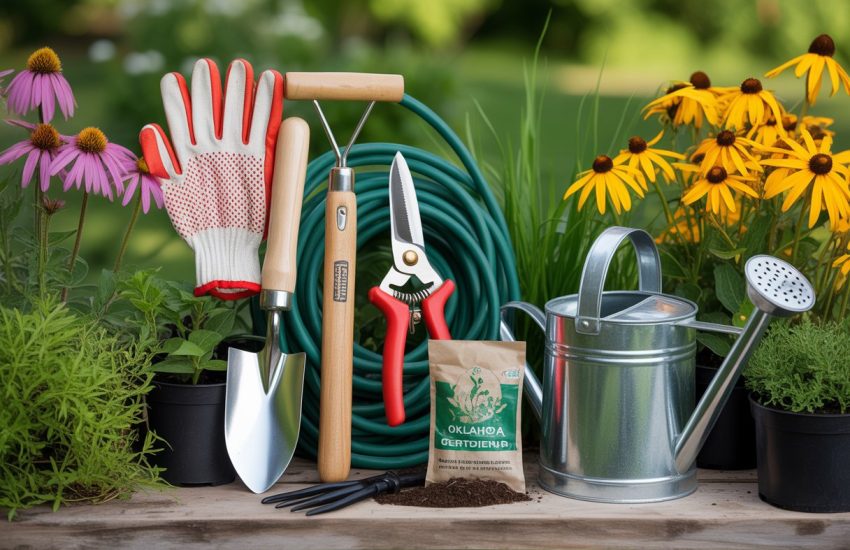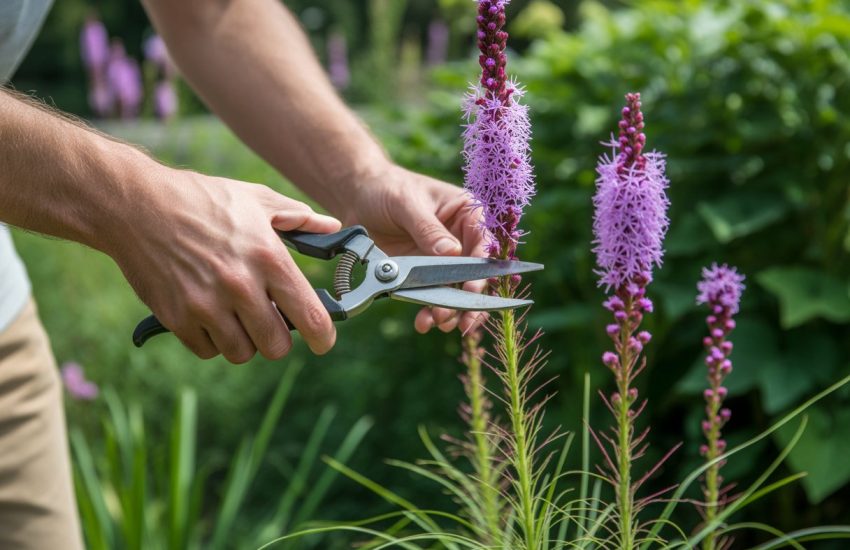What Are Good Companion Plants for Spinach?
Spinach (or Spinacia oleracea) is a beautiful green plant that can be grown in cool weather. Hence, spring or fall are perfect seasons to try and cultivate your plant. The spinach plant belongs to the Amaranthaceae family and the Chenopodiaceae subfamily. This means spinach is a flowering plant most commonly grown in saline soils. The plant’s dark green leaves are rich in iron, calcium, and other essential vitamins, making the leaves a desirable vegetable.
Spinach is a relatively easy plant to cultivate; as mentioned before, it requires cool weather conditions, so spring or fall is best. In some parts of the country, it can even grow in the winter. It should be planted between ½ to 1 inch deep in rows 12 to 18 inches apart.
Furthermore, spinach necessitates organically rich and well-drained soil. The plant should be watered regularly so it is moist at all times but not so much that it becomes soggy. You can harvest spinach four to six weeks after initially planting your seeds; however, you can begin the harvesting process when you feel the leaves have become your desired size.
Spinach can be harvested in the “cut and come again” method, which, if you’re not familiar with it, means you can harvest vegetables from a certain plant several times by cutting away the mature leaves to give the younger leaves some space which allows for better and new growth. This harvesting method will provide you with a continuous supply of fresh vegetables throughout the growing season without having to start the replanting process.

Aside from procuring the appropriate growing conditions for your spinach, you can also consider companion plants. Companion planting is an old technique of pairing certain plants that may grow better together. You may see this as mimicking nature. It may seem unusual to implement this technique. Still, it has been proven to work, and if done right, it will benefit your plants’ growth, specifically your spinach. This is one of the oldest and easiest methods to date, so don’t be afraid it will be hard to carry out in your garden.
What is companion planting?
As I mentioned in the previous paragraph, this is a planting technique that will benefit your plant’s growth. This can be because of several reasons; most commonly, it is because one plant may act as a repellant for the pests of another. It could also be due to the way each of the plants changes soil chemistry which would help other plants.
This method will help boost your garden’s health and fruitfulness, which will allow your garden to give you healthier crops. So by planting the appropriate plants near each other, you will give them the best possible growing conditions, and they will naturally benefit from each other’s characteristics. In short, applying this method will boost growth, repel pests, prevent weeds, produce more food, and even give the vegetables a better taste.
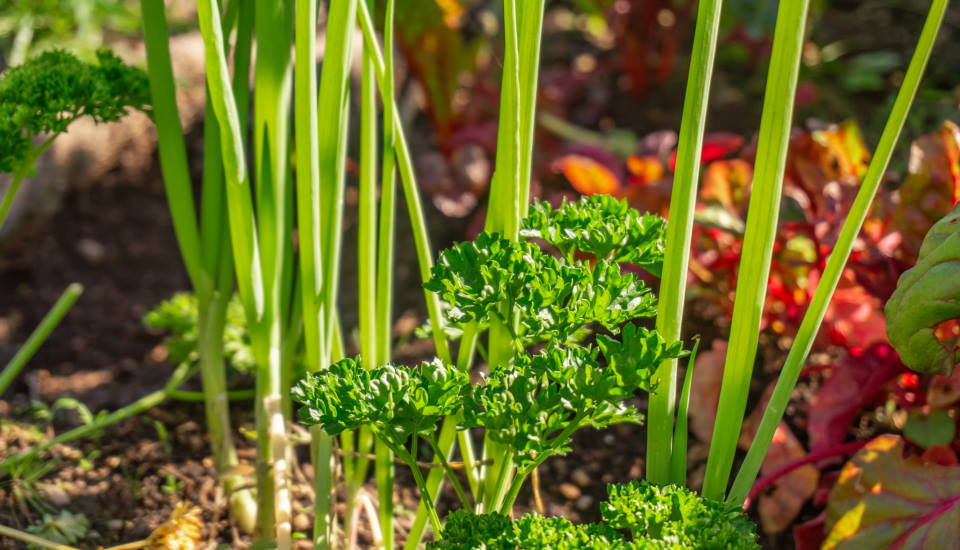
To achieve full possible efficiency with companion planting, there are some things to look out for to be able to do it accurately. Avoid planting the same plants together closely or in rows (monocultures). Though this normally maximizes the efficiency of the soil and local climate conditions, it also allows insects and slugs will find their favorite plants and spread quickly.
Try ‘intercropping’, which is a planting method where you would plant fast-growing edible plants between the slow-growing ones. Intercropping will allow diversity and balance in the field, you will be able to reduce the amount of chemical/fertilizer application, and lastly, this helps prevent weeds from growing.
Additionally, herbs can be planted in between the spinach throughout the garden as they have a very strong scent. This will act as a repellant for insects. Another great tip that is easy to carry out is to use tall plants to form a shaded area for other plants.
Lastly, something that will greatly benefit your crops is to plant lots of insect-friendly or bird-friendly plants, either in between your crops or closely around them. They attract natural predators such as birds eating slugs, caterpillars, hoverflies eating aphids, and bees pollinating your crops.
Doing this will also allow you to use fewer or no harmful chemicals at all. So, birds are the visitors you want! You can attract birds by installing a birdbath, putting out some food throughout the garden, and planting some plants that produce berries, seeds, or nuts at the end of the season. This will also allow them to seek shelter from cats and other predatory animals so that it will be a win-win situation overall!
What are appropriate companion plants for spinach?
1. Radishes

One of the best options as a companion plant for your spinach is radishes. Radishes are fast-growing vegetables that will attract flea beetles that might attack your spinach plant. Still, since the root is what you’ll be harvesting, no harm will be done.
Radishes will also act as a trap for leaf miner insects which are harmful to spinach, and will feed on it until it’s completely ruined. However, the radishes will act as a repellant and keep the spinach safe. Also, the harvesting period comes before the leaf miners can cause any harm; therefore, radishes are a fantastic option as a companion plant for your spinach.
2. Garlic

As mentioned in a previous paragraph, herbs with a strong scent will act as a repellant for insects when placed in between your spinach crops. Though garlic isn’t a herb, it does have a very strong smell.
It will therefore serve the same purpose of repelling pests, especially aphids, beetles, spider mites, and slugs. Garlic and spinach can co-exist in perfect harmony as the garlic will accumulate sulfur in the soil, which will then be ready for your spinach plant to use. Garlic and spinach will be beneficial to each other’s growth, so why not put them together?
3. Beans and peas
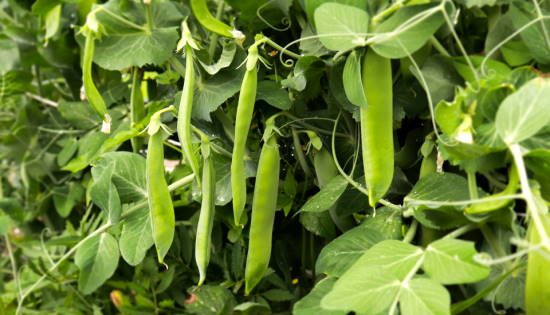
Another excellent option as a companion plant for your spinach is beans and peas. Legumes like beans and peas pull nitrogen from the air into the soil; this is why they would be advantageous companions for spinach.
Nitrogen is an absolute must for your spinach to grow healthily, so putting beans and peas with your spinach will help feed the plant. In return, your spinach will crowd weeds at the base of your legume plants. These plants will mutually benefit each other, and many good recipes can come out of them together too!
4. Strong-smelling herbs

As mentioned before, inter-planting herbs with a strong odor with your spinach will repel pests trying to ruin your crops. A few herbs that will help with this problem are basil, oregano, parsley, rosemary, and cilantro.
Basil is thought to repel whiteflies, mosquitoes, spider mites, and aphids. Oregano is a good companion to all vegetables, especially to vegetables such as spinach which are vulnerable to insects such as aphids. Parsley is beneficial in that it attracts insects such as parasitic wasps, ladybugs, and damselflies.
This may sound like it would cause an issue, but the opposite is true. Beetles such as ladybugs will benefit your garden’s health because they will consume real pests like aphids. So using these beetles is actually a safe and natural way to eliminate pests from your plants. Rosemary deters cabbage moths, bean beetles, Japanese beetles, and carrot flies. And lastly, cilantro, which again attracts beneficial insects that actually encourage the growth and health of your spinach crops.
5. Nasturtiums
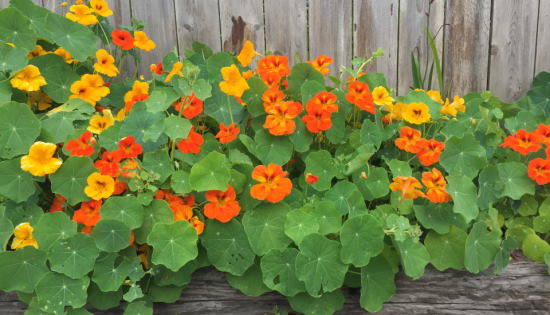
If you’re not familiar with nasturtiums, they are beautiful flowers that are easy to grow and will brighten up your garden amongst the plants. Nasturtium is best known for being a great companion plant as it acts as a repellant for many garden pests, specifically aphids.
They are also a friend with pollinators such as bees, butterflies, and hummingbirds. You want pollinators amongst your plants as they will encourage a thriving ecosystem that will improve your spinach crops’ quality. So aside from them being greatly beneficial to your plants, they will also add some vibrant color to your garden, making it look more lively.
6. Brassicas
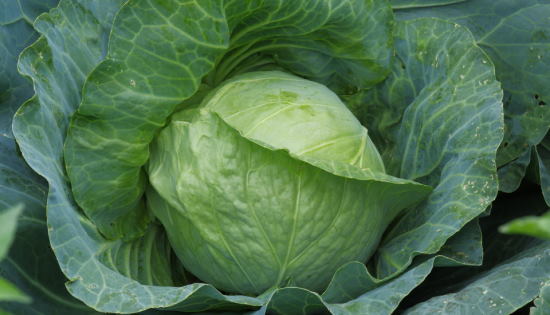
Brassica is a plant genus of 37 varying species, including vegetables such as radishes, turnips, broccoli, kale, arugula, mustard greens, kale, Brussels sprouts, cabbage, and cauliflower. All of the aforementioned vegetables differ in the nutrients they require to grow, meaning they won’t be competing with your spinach crops.
Whichever vegetable you choose to interplant can co-exist with your spinach plant in perfect harmony. Additionally, brassicas function as a natural fungicide for your soil, which will benefit many of the crops you have in your garden. So why not have the staples of a good salad right in your garden?
7. Nightshades
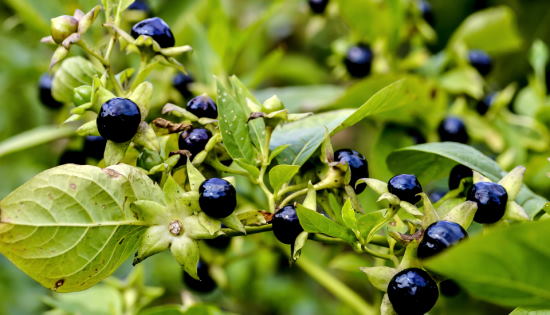
The nightshade family is inclusive of many vegetables like tomatoes, eggplants, peppers, and potatoes. However, potatoes are not recommended to interplant with your spinach crops as they will compete with your plant for the required nutrients.
However, tomatoes, eggplant, and peppers will not act as rivals to your spinach. Instead, their leaves will offer some shade to your spinach, which can help with the weed suppression at their base. It is also important to remember that nightshades are plants that love heat; this means that their planting time is much later than that of spinach.
Your spinach will likely be ready for harvesting towards the end of its season when it is time to put out your transplants for the tomatoes, peppers, and eggplants. This may help extend the spinach season.
8. Curcubits
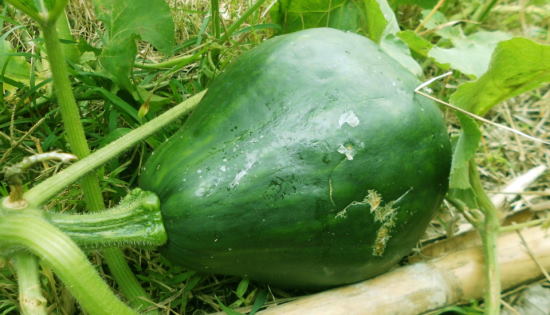
The Cucurbitaceae family includes vegetables and fruits such as squash, melon or cantaloupe, watermelon, zucchini, and cucumber. None of these compete with spinach for required nutrients, and they won’t hinder each other’s growth.
This means that whichever of these options you pick as a companion plant for your spinach, it will be a great option. You can’t go wrong with any of them. When grown vertically instead of horizontally, the cucurbit family’s vegetables and fruits will benefit from the weed suppression offered by your spinach plant.
One more thing you might want to know about is that cucurbits are best grown during the summer when the days and nights are consistently warm, and it is best not to plant your spinach way after you’ve planted the cucurbits.
9. Strawberries

Strawberries would be a fantastic companion plant for your spinach. Strawberries are also one of the most desired fruits, so it would be wonderful to have them in your garden, ready for yourself and guests alike to go out and pick. Strawberries are a beneficial companion for your spinach as they will keep the soil shaded and cool the way your spinach plant likes it best.
In turn, the saponin in the spinach helps prevent diseases that strawberries attract. Strawberries and spinach get their required nutrients from varying levels of the soil, meaning they won’t be rivals in any way. These two will be perfectly friendly with each other, and I wouldn’t miss out on some strawberries in my garden!
What Are Good Companion Plants for Strawberry?
10. Alliums
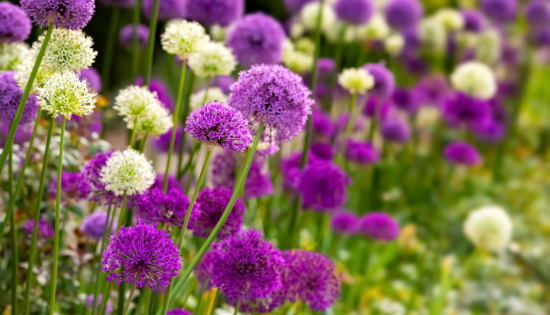
Alliums are also known as the onion family, and this specific family is inclusive of scallions, leek, chives, onion, garlic, and shallots. In a similar manner to garlic, other members of the allium family also give off pest-repelling odors and add beneficial nutrients to the soil that your spinach will be glad to use. Alliums and your spinach plant can co-exist in peace, so why not plant them side by side? They will be greatly profitable to have as companions.
11. Umbellifers
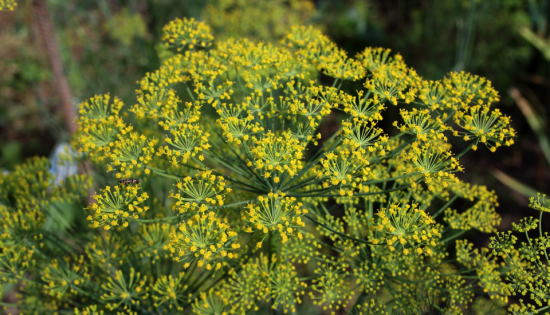
Umbellifers are a large family of aromatic plants of vegetables and herbs. Many of them are edible; however, some of them could be lethal. If you’re considering a companion plant from the umbellifer family to interplant with your spinach, there are plenty of safe options to consider, such as carrots, celery, dill, and parsley. (Though dill is technically a safe option, we will talk about that one more later on!) One of the reasons you might want to consider a companion from the umbellifer family is their strong scent. Again, this prevents pests and leaf-eating bugs from destroying your beloved spinach plant.
12. Oats
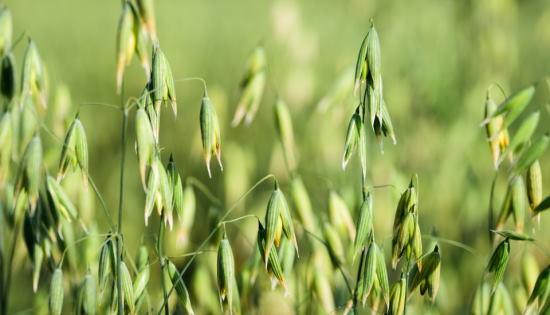
Oats, of the best breakfast options available! You can add as many fruits or even chocolate and make them an ideal and nutritious meal. As oats don’t need as much nitrogen as spinach does, they won’t act as rivals. Your spinach plant can absorb all the nitrogen it needs. Also, you can grow your oats during the summertime, where your taller plants can be used in a row beside the spinach plants to shade the plants.
Crops to Avoid Planting with Your Spinach:
While spinach gets along with almost all crops you can think of, there are a few that it can absolutely not get along with. A specific companion plant may either be a competitor in nutrients or possibly be toxic to your spinach.
1. Potatoes
As mentioned before, potatoes do not pair well with your spinach plant as companions. Although they’re in the nightshade family, the rest of which make great options for inter-planting with spinach, potatoes act as competitors for the nutrients that your spinach plant requires to grow into a fruitful crop. Therefore they’re not recommended as companion plants for spinach.
2. Fennel
Fennel emanates a compound that hinders the growth of other plants. This is why it would make a terrible companion for spinach as well as other plants you may have in your garden.
3. Dill
This one is tough. Although young dill may be beneficial to your spinach, as it matures, it actually constrains other plants growing nearby. Though some still recommend dill as a companion plant for spinach, it is recommended you wait to plant the dill until the spinach plant is about 1/3 of its mature size. Still, you could find far better options to use as a companion plant!
Conclusion
So now that you’ve been informed about what companion planting is, and also the do’s and the don’ts when it comes to the execution of companion planting, you’re absolutely ready to start. There is nothing else that you need to know about, or need to do before starting with the inter-planting process, except put on your gardening boots and gloves and get right to it! It is smart to keep this text nearby to be able to return to it quickly whenever needed. Have patience with your plants, and soon you will have a beautiful flourishing garden full of plants, most specifically spinach, I hope! I hope this text was helpful, have fun in your garden.

